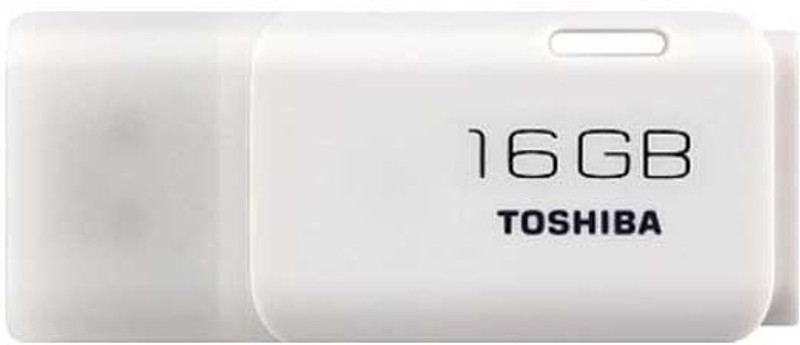How To Buy A Good Gaming Chair: Know In 8 Points And Check Out These 8 On Amazon From CELLBELL To Xenon

There's a strange kind of pride in unboxing a brand-new gaming chair. The bucket seat, the vibrant colours, the almost futuristic shape, it's like strapping yourself into a race car, even if the only thing being raced is a Call of Duty session or deadline. But here's the kicker: most gaming chairs look the part but fail where it counts, comfort, support, and long-term posture health. Aesthetics might make for great Instagram posts, but the real deal lies beneath the synthetic leather and racing stripes. Especially when one's sitting for hours at a stretch, the difference between a chair that supports and one that strains is a matter of health, not just taste. So, before dropping ₹15,000 or more on a gaming throne that leaves your spine screaming in protest, it's worth diving into what matters.
Here is how to buy a good gaming chair that will help you separate a well-designed gaming chair from an overpriced piece of decoration. And check out our list of gaming chairs now available on Amazon from CELLBELL to Xenon.
Also Read: Born To Game: How The Right Gaming Chair Can Level Up Your Pro Skills
Here Is What to Look For In A Gaming Chair Before You Regret Your Choice And Check These 8 Out Now Available On Amazon From CELLBELL To Xenon; Photo Credit: Unsplash
1. Ergonomics Over Aesthetics, Always
Let's be honest, everyone loves a chair that looks like it belongs in a Formula 1 cockpit. But before giving in to that flashy colour scheme and sporty silhouette, think about what your back needs. Ergonomics isn't a fancy buzzword; it's the science behind comfort and spinal health.
A truly ergonomic chair adapts to your body, not the other way around. Look for adjustable armrests, lumbar support that actually hugs your lower back, and a seat base that doesn't feel like a rock after an hour. Features like tilt mechanisms and height adjustments might not look cool in a product photo, but they'll make all the difference when you're grinding through an all-night FIFA session or finishing that final project at 2 AM.
And remember, just because a chair has 'gamer' in its name doesn't mean it's good for actual humans. A chair worth sitting in forgets it's there, and lets you focus on what matters without reminding your spine it's been eight hours.
2. Check The Lumbar Support, Your Back Will Thank You
It's easy to underestimate how much stress your lower back takes while sitting. Lumbar support is one of those features that rarely gets the spotlight but often makes or breaks the comfort level.
Many gaming chairs come with detachable pillows claiming to offer lumbar support, but here's the thing, they're often more of a gimmick than a solution. Real lumbar support should be adjustable and built into the chair's structure, not just strapped on like an afterthought.
If you've ever stood up after a long session and felt like you've aged a decade, chances are your chair didn't have proper lumbar alignment. The best ones mimic the natural curve of the spine, providing subtle yet crucial support that keeps discomfort at bay. Think of it as a silent partner in your productivity (or your next win in Valorant).
Pro tip: When testing or researching chairs, lean back. If your lower back feels a gentle push instead of space, you're on the right track.
3. Material Matters: It's Not Just About Looks
Leatherette, mesh, fabric, genuine leather, it's like picking toppings on a pizza, but with way more at stake. The material covering your chair affects not just aesthetics, but breathability, durability, and overall comfort.
Many budget chairs come wrapped in PU leather. While it looks sleek, it's not the most forgiving in warm climates. Sitting in it for hours can turn into a sweaty situation, especially during those power cuts where the fan becomes more decorative than functional.
Mesh is a fantastic alternative, particularly if you tend to run warm. It allows air to circulate and keeps things breezy. Fabric chairs fall somewhere in between, comfortable and soft, but sometimes tricky to clean. And genuine leather? Luxurious, sure, but it comes with a price tag that often outweighs its practicality unless you're going full CEO mode.
Choosing the right material isn't just about what pleases the eye. It's about what stays comfortable during hour five of your Sunday binge or after back-to-back Zoom calls.
4. Armrests Aren't Optional, They're Essential
Try playing for an hour without using arms rests. Impossible, right? That's why adjustable armrests are non-negotiable. Yet, so many gaming chairs get this wrong.
The best armrests don't just go up and down. They swivel, slide forward and back, and adjust inwards or outwards to fit your frame like a glove. This flexibility helps prevent wrist strain, elbow discomfort, and that annoying shoulder tension that sneaks up uninvited.
Fixed armrests, especially ones set too high or low, can mess with your natural posture. The result? Achy shoulders and a creeping headache that's not from screen time.
When it comes to gaming or long hours at a desk, the small things add up. Your wrists and shoulders will be the first to send an SOS if your armrests aren't doing their job.
5. A Strong Base And Wheels That Actually Work
Here's something most people don't check until it's too late, the chair's base. That five-point base with smooth-rolling wheels isn't just for spinning around dramatically between meetings. It's about stability and ease of movement.
Cheap chairs often skimp on the base, using low-quality plastic that wears out fast or starts creaking ominously. The result? A chair that tilts unexpectedly or struggles to roll across even tiled floors. Aluminium or reinforced steel bases are a far better option and can handle daily use without turning into a squeaky mess.
And the wheels? Go for caster wheels that glide smoothly. Especially if you work or game on hard floors, rubber-coated wheels make a noticeable difference. No one needs to feel like they're dragging a sofa just to shift positions slightly.
Spending a little extra on a solid base can save you from a lot of unnecessary noise, and potential spills.
6. Adjustability Is The Real MVP
Everyone's body is different, which means a one-size-fits-all chair doesn't truly fit anyone. The more adjustable your chair, the more likely it is to actually support you correctly.
Height is a given, but don't stop there. Look for features like seat tilt, backrest recline angles, tension control, and adjustable lumbar and neck support. These tweaks might seem minor, but they allow you to tailor the chair to fit your posture and preferences, something your spine will be grateful for.
It's especially important if you switch between activities, say, sitting upright while working, leaning back slightly while watching videos, or tilting back for a short rest. A chair that adapts with you is the kind of multitasking support you didn't know you needed.
Think of adjustability as a built-in guarantee for comfort, because the only thing that should feel stiff after hours in a chair is your competition.
7. Size And Fit, Because Chairs Aren't One-Size-Fits-All
A chair that's too big can be just as uncomfortable as one that's too small. Seat width, depth, and back height all play a role in whether the chair cradles or crushes.
If you're under 5'6", a chair with a deep seat might cause your legs to dangle, putting pressure on the thighs. For taller folks, short backrests can lead to poor neck support and a constant need to slouch.
When possible, always test a chair, or at least, read user reviews from people of a similar height and build. If you're ordering online, check the dimensions carefully. A good fit should allow your feet to rest flat on the floor, with knees at a right angle and your back snug against the support.
The right size can feel like a chair was built just for you. The wrong one? Like trying to wear someone else's shoes for a marathon.
8. Don't Ignore The Warranty And Customer Service
It might not seem sexy, but warranty and after-sales service can be the unsung heroes of a chair purchase. Even the sturdiest chairs can develop creaks, looseness, or hydraulic issues over time.
Look for brands that offer at least a one-year warranty, though two to three years is better. Also, make sure spare parts, like wheels or hydraulic lifts, are available and affordable. Some manufacturers are great at designing chairs but ghost you the moment a problem arises.
Read reviews not just about comfort, but about how the company handles returns, replacements, or service requests. After all, the true test of a product isn't just how it performs when new, it's how the brand treats you when things go sideways. Trust goes a long way when your back and bank account are both involved.
Products Related To This Article
1. Office Chair For Computer Work And Study Chair For Home
2. CELLBELL Watson C102 High Back Boss Chair For Office
3. CELLBELL Multi-Functional Ergonomic Gaming Chair
4. Cosmic Byte CB-GC-02 Mysterious Gaming Chair
5. Green Soul Vision Multi-Functional Ergonomic Gaming Chair
6. Imported Xenon Gaming High Back Ergonomic Office
7. The Sleep Company - Pro Gaming Chair
8. Racing Series S-Line SL1000 Gaming Chair Faux Leather
Choosing a gaming chair isn't just a question of style or brand recognition. It's about comfort, durability, and whether you'll walk away from your desk feeling energised or like you've gone twelve rounds with gravity. When you do check out the list of gaming chairs on Amazon from CELLBELL, XENON to the Sleep Company, provided above, do remember that a chair that's truly worth the investment isn't the one with the loudest design, but the one that makes you forget you're sitting at all. So, before hitting 'Buy Now' on that trendy chair making the rounds on YouTube reviews, take a step back and maybe do a little back-stretch. Remember what matters most: your health, your comfort, and a seat that works as hard as you do. Because when it comes to the chair you'll spend half your life in, settling is the one game you don't want to play.
Disclaimer: The images used in this article are for illustration purpose only. They may not be an exact representation of the products, categories and brands listed in this article.































